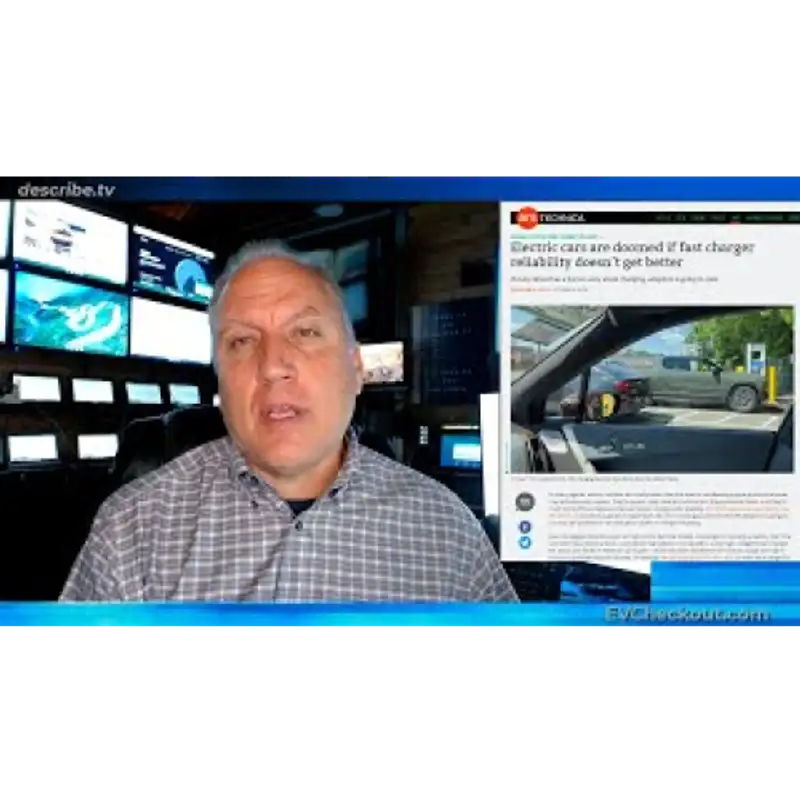Is the EV Market Doomed? Unpacking the Future of Electric Vehicles
Download MP3Every product and service is subject to the laws of supply and demand. Obviously, if you have a big supply and things are available but nobody wants them, then you're not going to sell that many. Electric cars are no different.
As of right now, one or two percent of new cars that are sold are pure electric plug-in vehicles. Hybrids are a different story. Electric cars have a lot of obstacles to face to get a higher adoption rate. Look, if the cars were very desirable, they would be selling more than one or two percent.
There have been some vehicles that have hit the marketplace in the last 10 years that are very popular and have had more than a five percent adoption rate. Some very popular cars, like Ford F-150 trucks or Ford Broncos, instantly had a market share that was more than all the electric vehicles put together. Why is that?
Well, part of it has to do with the pushback from people regarding how they use their vehicles, and obviously, charging is a big part of it. When you commit to a full electric plug-in vehicle, you're committing to driving by every gas station as a way to get refueled. Now, you might think, "Well, driving by gas stations is a good thing because they all say five or six dollars," but you still have to fill up somewhere.
With an electric vehicle, that means finding a charging station. Well, if you can't find one or it takes too long, that's going to be a problem. Here's an article from Ars Technica where it says, Electric cars are doomed if fast charger reliability doesn't get better. The subtitle is even more important: Every driver has a horror story about charging. Adoption is going to stall.
There’s your answer. Even people who do have electric vehicles have a grumpy story about it. And if that happened with any kind of car, no one would want them. Even the biggest EV enthusiasts can't ignore the fact that it takes a lot longer to recharge a battery than to fill a tank with gas. Even when a battery is connected to a fast charger, the way we use cars now means a car represents freedom—being able to travel from coast to coast on a whim.
Stopping every 250 miles is a problem if you have to wait hours to recharge. And some people might say, "Well, just plan for your trip." Yes, planning makes sense, but if there aren't enough chargers where you need to go, the issue isn't just your route—it's where you have to stop. Sometimes, you have to stop sooner because there may not be a charging station. Sometimes, you have to worry about running out of charge.
With a gasoline car, you don’t really have to plan. When you see the gas gauge getting below half or maybe toward a quarter, it doesn’t matter where you are in the world—you’re going to be within 10 or 15 minutes of a gas station, especially if you're on a major highway. Even in rural areas, it’s very difficult to be in a place where four or five gallons of gas won’t get you somewhere.
A quarter tank of gas for a typical car is about four or five gallons. Even at 20 miles per gallon, that’s 100 miles. It’s very hard to be farther than 100 miles from a gas station. So as long as you don’t let it go below a quarter tank, you’ll be okay with a gasoline car.
With an electric vehicle, it’s a different story. Even if you don’t let it go below half and you have a 200-mile range, at half a charge, you only have 100 miles left. There are many places in the country that are farther than 100 miles from a charging station—especially a fast-charging station. Maybe you’re near a typical AC charging station, but that might take five or six hours to charge up, or sometimes even longer.
Do you want to stay parked in one place for eight hours? Is it safe to be there for eight hours? Is it in a bad neighborhood? Is it dark? This is the problem with the adoption of electric vehicles. And it’s not just about finding a place to charge—people run into all sorts of problems.
One reader wrote that, in most places, you have to wait five minutes just to see if the charger would even connect to the communication system. Sometimes, you have to wait 10 minutes. The overall result? Only one out of six charging stations worked seamlessly, meaning they could just plug in and charge right away. A lot of them don’t even work.
There was an article in Car and Driver a couple of months ago about the Bay Area in California—San Francisco, presumably a place with a high adoption of electric vehicles. In their survey, only 25% of electric chargers worked. In this article, two of four chargers were completely inoperable—that’s half that didn’t work.
Even if you do find one that works and you’re plugged in, then you have the "breathing over your shoulder" mentality. What that means is, you get to the charger, and no one else is around. You start recharging your battery, and then someone else pulls up and joins the wait. Now you’re worried because this person is breathing down your neck—you feel like you're in their way.
At a gasoline station, even if you pull up and all the pumps are taken, it only takes a minute or two before you can get to a pump. But let me ask you this: if you’ve ever pulled up to a gas station and all the pumps were full, knowing full well it’s only going to be a minute or two before you can get one, how do you feel?
Aren’t you annoyed? Aggravated? Yeah, you might play with your phone or the radio, but you’re still annoyed that you have to wait. Now imagine having to wait 10 minutes, 15 minutes, or even an hour just to get plugged in.
This is the biggest reason for the failure of adopting electric vehicles. It’s not just the price—although the price is a factor too. Most electric vehicles are about $10,000 more than a comparable gasoline vehicle. And while there are tax offsets, it’s not cash—it’s a tax credit.
Ultimately, what’s holding electric vehicles back is people worrying about their freedom to use their car as they want. There’s no clear solution to that.
What do you think the solution is? If you like electric vehicles, how do you propose to get more people to want to give up their dreams of just driving anywhere they want without worrying about finding a station and waiting hours to refuel?

